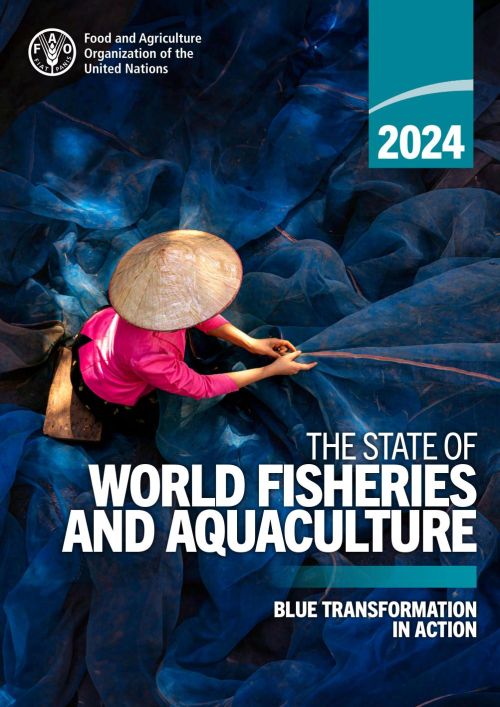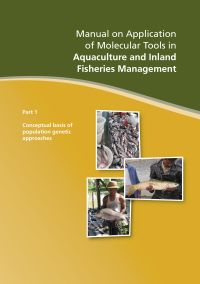The State of World Fisheries and Aquaculture 2024: Blue Transformation in action
11 June 2024 | Food and Agriculture Organization of the United Nations | 4235 Downloads | Aquatic plants, Freshwater finfish, Inland aquaculture, Marine finfish, Markets and trade, Molluscs (shellfish and other)
The 2024 edition of The State of World Fisheries and Aquaculture features the Blue Transformation in action, illustrated by activities and initiatives, led by FAO in collaboration with Members, partners and key stakeholders, to integrate aquatic foods into global food security and sustainability, enhance policy advocacy, scientific research and capacity building, disseminate sustainable practices and technological innovations, and support community involvement.
Part 1 of this edition of The State of World Fisheries and Aquaculture benefits from significant improvements in data collection, analytical and assessment tools and methodologies to present the most up-to-date review of world fisheries and aquaculture production and utilisation.
Part 2 highlights the role of FAO and its partners to catalyse the transformational changes required to support aquaculture expansion and intensification, effective management of global fisheries and upgrading of aquatic value chains.
Part 3 covers the high-impact challenges and opportunities of the untapped potential of utilising whole fish and by-products to improve food security and nutrition, expounds on the role of aquatic food systems in providing critical climate, biodiversity and environmentally sound solutions, and highlights the importance of their integration into national and multilateral processes. It also presents an outlook on future trends up to 2032 based on projections.
The State of World Fisheries and Aquaculture 2024 provides the most up-to-date and evidence-based information, supporting policy, scientific and technical insights on challenges, opportunities and innovations shaping the present and future of the sector, for the benefit of a wide and expanding audience of policymakers, managers, scientists, fishers, farmers, traders, civil society activists and consumers.
Creative Commons Attribution.

